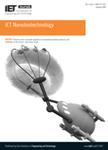版权所有:内蒙古大学图书馆 技术提供:维普资讯• 智图
内蒙古自治区呼和浩特市赛罕区大学西街235号 邮编: 010021

作者机构:Heilongjiang Univ Sch Chem & Mat Sci Harbin 150080 Heilongjiang Peoples R China Heilongjiang Acad Sci Inst Petrochem Harbin 150040 Heilongjiang Peoples R China
出 版 物:《IET NANOBIOTECHNOLOGY》 (IET纳米生物技术)
年 卷 期:2018年第12卷第8期
页 面:1031-1036页
核心收录:
学科分类:0710[理学-生物学] 0808[工学-电气工程] 08[工学] 0805[工学-材料科学与工程(可授工学、理学学位)]
基 金:National Natural Science Foundation of China Project of Heilongjiang Science and technology [ZY17A06] Science Foundation of Heilongjiang Academy of Sciences [YY2017SH01, ZNBZ2018SH01]
主 题:transmission electron microscopy oxidation electron diffraction catalysts visible spectra reduction (chemical) catalysis palladium nanofabrication nanoparticles particle size ultraviolet spectra X-ray diffraction electrolysis Fourier transform infrared spectra organic compounds palladium nanocubes cetyl trimethyl ammonium bromide capping agent chemical reducing agents high-resolution TEM selected area electron diffraction biomass electrocatalytic properties pine needle extract ultraviolet-visible spectroscopy Fourier transform infrared spectroscopy flavonoids esters terpenoids polyhydric alcohols transmission electron microscopy X-ray diffraction face-centred cubic structure particle size methanol electrooxidation reaction biosynthesis processes catalysts antipoisoning ability long-term stability Pd
摘 要:The bio-synthesis of palladium nanocubes (PdNCs) was realised using pine needle extract as the reducing agent and cetyl trimethyl ammonium bromide as the capping agent. As an eco-friendly and readily available biomass, pine needle extract avoided the use of highly polluting chemical reducing agents. The growth process of PdNCs was analysed using ultraviolet-vis and Fourier transform infrared spectroscopy. Flavonoids, esters, terpenoids and polyhydric alcohols, which contain reductive groups, were mainly responsible for the transition of Pd2+ ions to PdNCs. The morphology and structure of PdNCs were characterised using transmission electron microscopy (TEM), high-resolution TEM, selected area electron diffraction and X-ray diffraction. It was indicated that the as-prepared PdNCs displayed a relatively high purity and good crystallinity with a face-centred cubic structure and exhibited sizes ranging from 6.11 to 29.51nm with an average particle size of 11.18nm. In the methanol electro-oxidation reaction, the PdNCs enclosed by {100} facets exhibited superior electro-catalytic activity to commercial Pd/C, which was rarely reported in other bio-synthesis processes for Pd catalysts. Meanwhile, the PdNCs showed excellent anti-poisoning ability and long-term stability. This study reveals the possibility of preparing shape-controlled PdNCs with a specific structure and excellent electro-catalytic activity.